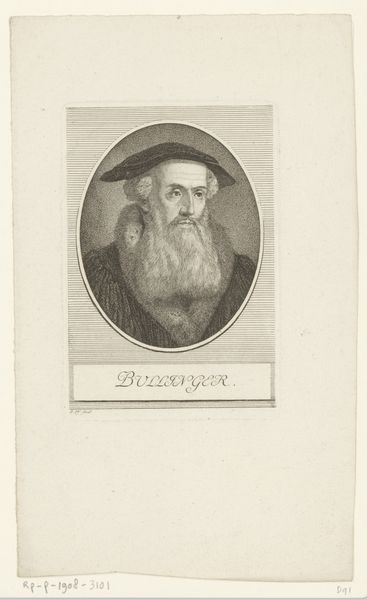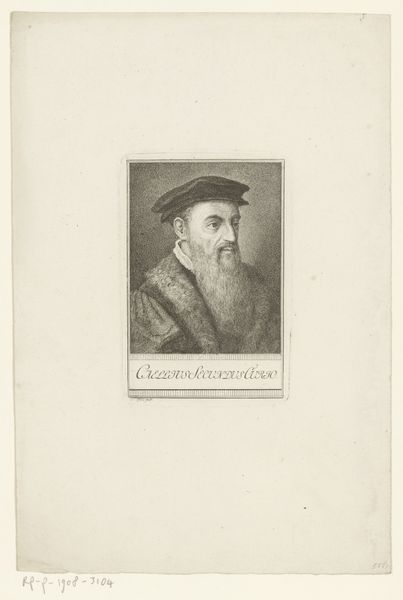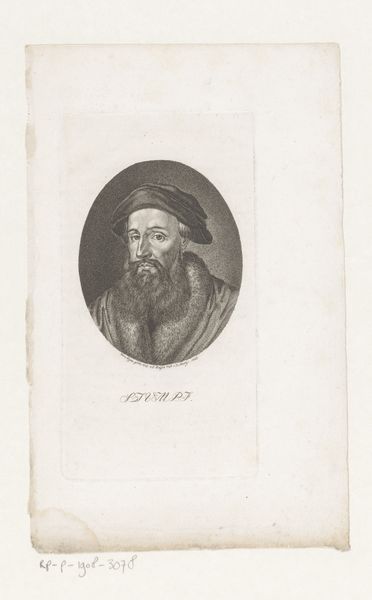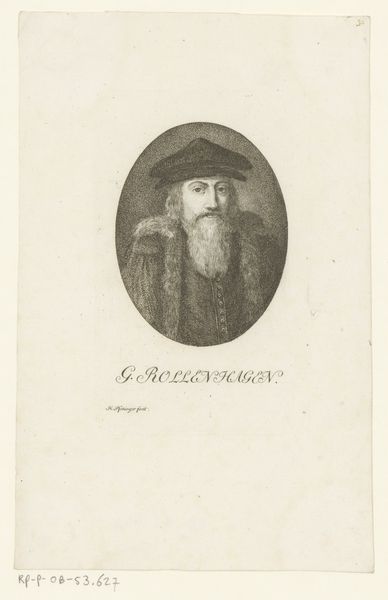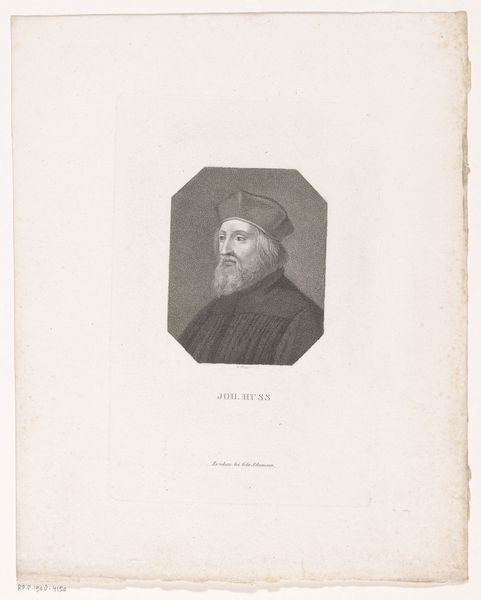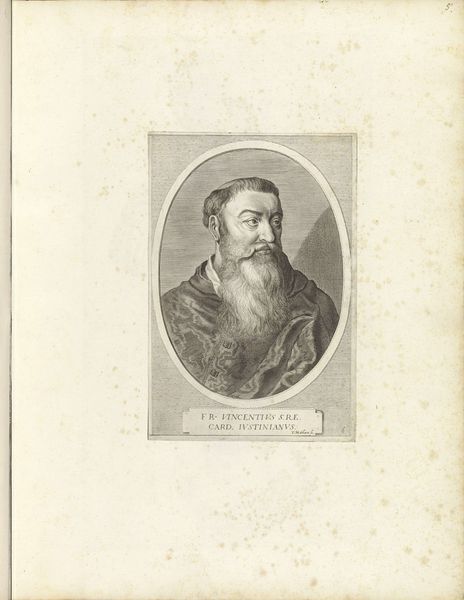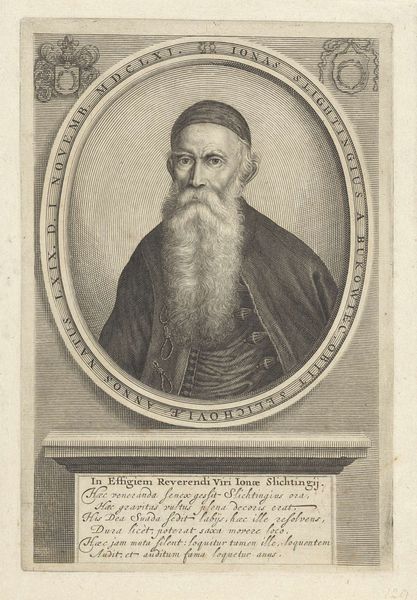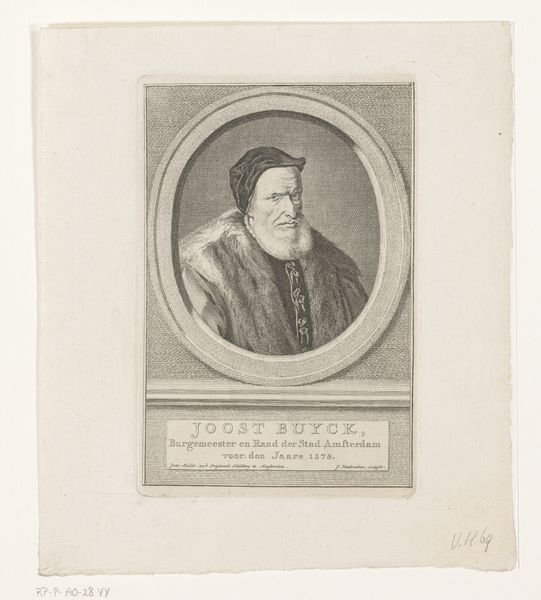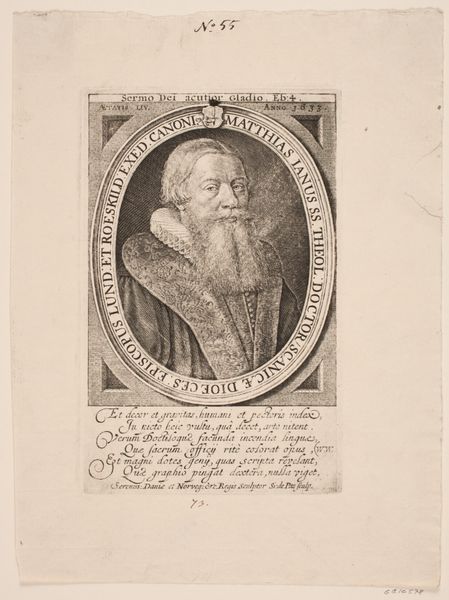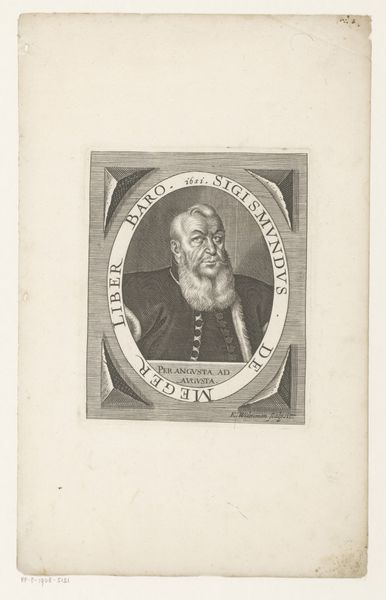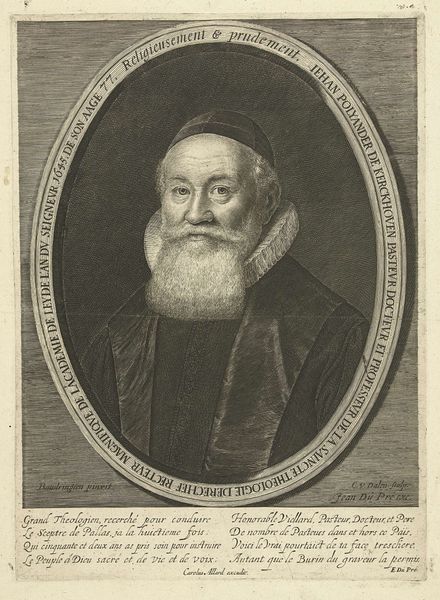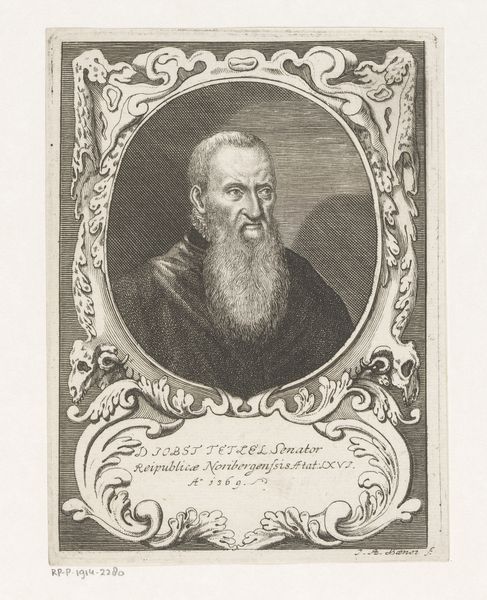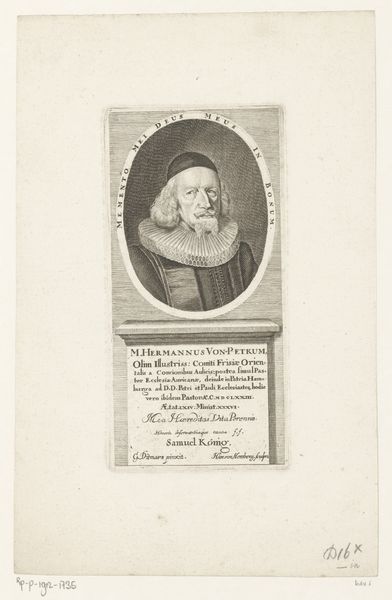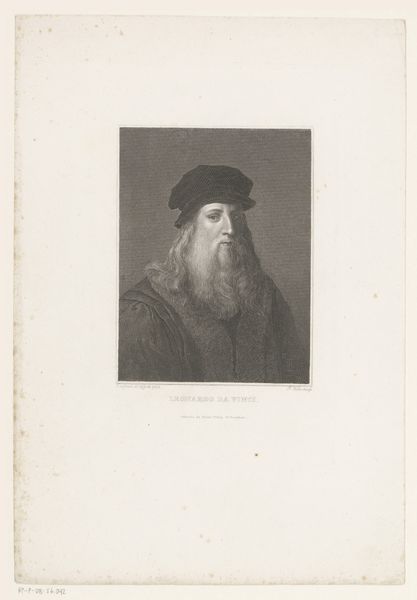
Dimensions: height 129 mm, width 89 mm
Copyright: Rijks Museum: Open Domain
Editor: So, this is "Portret van Caspar Bauhin," an engraving made sometime between 1759 and 1815 by Heinrich Pfenninger. I'm immediately struck by the detail in his beard and ruff. What can you tell me about it? Curator: Well, consider the historical context. Portrait engravings like this one weren't simply aesthetic objects. They were vital tools for constructing and disseminating power, status, and knowledge within a specific social hierarchy. How might this portrait, specifically, have played a role in solidifying Bauhin’s reputation, given his prominent position as a botanist and physician? Editor: That's a great point. I hadn't thought about it that way. It makes me wonder, was this image circulated among his peers, perhaps, reinforcing his authority in the scientific community? Curator: Exactly! Think about who had access to these images, and what messages they conveyed. The meticulous detail you mentioned becomes significant, doesn't it? It’s not just about accurate representation, but about projecting a particular persona tied to erudition and power. It also highlights how access to visual representation wasn’t equally distributed; the sitter here could mobilize printmaking to perpetuate his legacy. What impact could limited or absent representation of marginalized figures have? Editor: So, beyond being a likeness, it’s actively participating in a larger discourse of social and scientific authority? Curator: Precisely. And let's consider the visual rhetoric at play – the solemn gaze, the formal attire. These are coded messages designed to convey specific meanings to the viewer. We need to dissect those codes to understand the broader ideological implications. What do you see when you consider it through this lens? Editor: I see that even something as seemingly straightforward as a portrait becomes a complex statement about power, knowledge, and representation. It definitely makes you consider who gets to be remembered, and how. Curator: Absolutely. And critically, whose stories are actively erased or omitted.
Comments
No comments
Be the first to comment and join the conversation on the ultimate creative platform.
